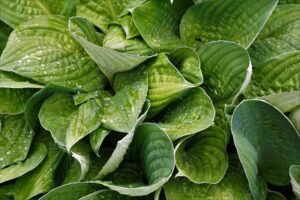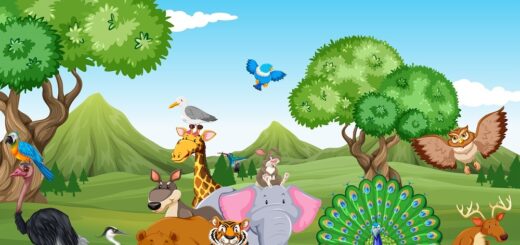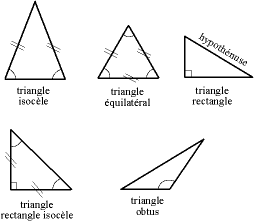OUR ENVIRONMENT
Solved exercise of environment


Summary
Earth is a unique planet in the solar system, it is the only planet that supports life. The earth is said to have been formed about 4.6 billion years ago, the first sign of life is said to have appeared about 3.8 billion years ago. Water has some unique physical and chemical properties which support life. Water exists in all three states: solid-ice, liquid-water, and gas-water vapour. Earth has an atmosphere, which is made up of gases like oxygen, hydrogen, and carbon-di-oxide. Earth is truly a dynamic planet where life is influenced by its physical environment. At the same time, various factors in the environment influence living organisms. This two-way process is the essence of the dynamic nature of our planet.
Hydrosphere

71 percent of the earth’s surface is covered by water; this part of the earth is called hydrosphere. It is the only planet in the solar system with abundant liquid water and this is one of the factors responsible for making life possible on earth. It continues to change in shape. Due to seafloor spreading and continental shaft. The total mass of Earth’s hydrosphere is about 1.4 × 1018 tones.
Atmosphere

which is a mixture of gases, water vapour and fine dust, surrounding the earth and its another unique feature of earth. Nearly 78% of atmosphere is nitrogen and 21% is oxygen, while carbon dioxide, argon and other gases make up the rest. The atmosphere has a mass of about 5.15×1018 kg, Atmosphere of the earth at its beginning was rich in carbon dioxide and the oxygen content was very less. As photosynthetic algae appeared on earth, oxygen concentration increased resulting in a shift from reducing type of atmosphere to an oxidizing type.
Lithosphere

The surface or crust of the earth is called lithosphere. The lithosphere is the solid, outer part of the Earth. It includes the mountains, the ocean floors and the plain lands. he uppermost part of the lithosphere that chemically reacts to the atmosphere, hydrosphere, and biosphere. through the soil-forming process is called the Pedosphere. The two types of lithosphere are


- Oceanic lithosphere: which is associated with oceanic crust and exists in the ocean basins
- Continental lithosphere: which is associated with continental crust.
Biosphere

Biosphere is the area of earth where life exists Hydrosphere, atmosphere and lithosphere of the earth together form the biosphere. The biosphere extends from the deepest root systems of trees to the dark environment of ocean trenches, to lush rain forests and High Mountain
Ecology
The scientific studies which enable us to understand the totality and pattern of the relations between organisms and their environment is called ecology. It is also known as environmental science. The relationship between organisms and their environments. The study of the detrimental effects of modern civilization on the environment, with a view toward their prevention or reversal through conservation.
Relationship between various Components of nature
The various components of the natural environment are related to one another. For example, the air; human beings’ and animals’ breath, is essentially from trees and other forms of vegetation. The trees in turn take in the air human beings breathe out. The land provides support and nutrients for the trees and other plants. The plants also in turn provide the land with their dead leaves or other parts that contribute to the formation of soil.
Organism



The organism is a creature such as a plant, animal or a single-celled life form, or something that has interdependent parts and that is being compared to a living creature. A variety of organisms are found on the planet earth from a single-celled amoeba to humans and from microscopic bacteria to huge banyan trees. An organism represents an individual member of the next level called species. a species is a group of similar organisms sharing a common genetic structure. Hence, they are capable of breeding only among themselves. Human beings belong to the species sapiens, dogs belong to the species familiars. Pea plants belong to the species Sativum.
A group of individuals belonging to the same species occupying a given area, at a given time is called population. All these different populations together constitute a biotic community. Members of a community interact with each other. The community as a whole will be interacting with the non living components. Interaction between living and nonliving components is known as ecosystem. Ecosystem forms the basic unit of environmental science. ecosystem consists of different kinds of living organisms in an area interacting among themselves and with the nonliving components in that area.
TYPES OF ECOSYSTEM

Natural ecosystems can be broadly classified into
Aquatic ecosystems and terrestrial ecosystems.
Components of Ecosystem
The nonliving components are also called abiotic components. They represent the physical and chemical conditions operating in the environment. Physical factors include air, light, heat, soil, rainfall, and humidity. Chemical factors are represented by various organic and inorganic substances. The living components are also called biotic components. They are represented by plants, animals, bacteria, and fungi. The living components are also called biotic components. They are represented by plants, animals, bacteria, and fungi.
Autotrophs

Planets are autotrophs they are capable of manufacturing their own food. Green plants inland ecosystems and algae in aquatic ecosystems are described as producers. Algae also belong to this category.
Heterotrophs

Animals cannot prepare their own food. Heterotrophs depend on producers for their food either directly or indirectly. Hence, in any ecosystem animals are described as consumers. Animals differ in their food habits. There are animals that feed only on plants and they are called herbivores. In the ecosystems, herbivores are described as primary consumers.
There are animals that obtain their food by eating herbivores. They are described as secondary consumers. Grasshoppers may be consumed by frogs.
Some animals obtain their food by feeding on secondary consumers. They represent the tertiary consumers. This kind of nutritional relationship where the food energy is getting transferred from one trophic level to another is called a food chain.
Food chains can be broadly classified into the following three types.
- Grazing or herbivorous food chains:
- Detritivorous food chains
- Parasitic food chains
Ecological Pyramids: An ecological pyramid is a graphical representation designed to show the biomass or bio productivity at each trophic level in a given ecosystem. A pyramid of energy shows how much energy is retained in the form of new biomass at each trophic level, while a pyramid of biomass shows how much biomass Ecological pyramids begin with producers on the bottom (such as plants) and proceed through the various trophic levels (such as herbivores that eat plants, then carnivores that eat flesh, than omnivores that eat both plants and flesh, and so on). The highest level is at the top of the food chain.
BIOMAGNIFICATION: In food chains, it is not just the nutrients that get transferred. Several toxic substances may be transferred from one trophic level to another. In most of these cases, the concentration of toxic substances increases, as they pass on to the higher trophic levels. Such an increase in the concentration of a toxic substance such as DDT, mercury, cadmium, etc with every link in the food chain is called biological magnification or biomagnification. ex: a gradual increase in the concentration of DDT in the trophic levels in several food chains
Exercises : 1.1
I. Four alternatives are given to each of the following incomplete statements/questions. Choose the right answer.
1. Fill in the box with the name of the appropriate organism
Grass → → Frog → Snake → Eagle
a.deer b. lizard c. grass hopper d. rat
Ans: Grass hopper
2. One of these is a decomposer
a. Fungi b. algae c. protozoa d. insect
Ans: Fungi
II. Fill in the blanks with Suitable words.
1. The crust of the earth is called Lithosphere
2. The basic unit of environmental study is ecosystem
3. A group of individuals belonging to the same species is population
4. Different kinds of ecosystems together constitute Biosphere
5. In a parasitic food chain, the pyramid of number will be inverted
III. Answer the following.
1.List the factors which have made life exist on earth.
- The presence of water has some unique physical and chemical properties that are essential for supporting life’s existence. An atmosphere which is a mixture of gases, water vapor to support and sustain life.
- As the photosynthetic algae appeared on earth the oxygen concentration increased which is ideal for the other life forms.
- Lithosphere allows life to flourish unlike the barren surface of other planets.
2.Define the Following.
- Lithosphere: The outer layer of the earth comprising the crust and the upper part of the mantle he lithosphere is about sixty miles thick.
- Population: A population is the number of all the organisms of the same group or species, which live in a particular geographical area.
- The biotic community Is the living thing that shapes an ecosystem. Usually, they include producers, i.e autotrophs Eg: plants.
Food web Trophic level: A network is a food chain or feeding relationship by which energy and nutrients are passed on from one species of a living organism to another.
3.What is an Ecosystem.
A unit in nature where there is an interaction between living and nonliving components is known as an ecosystem.
4.Why is the use of DDT not advisable?
The indiscriminate use of DDT has resulted in biomagnification in the tropic level. A gradual increase in the concentration of DDT has been detected in the tissues of small fishes, predatory birds, and also in mother’s milk. Therefore it is not advisable to use DDT.
5.Construct a simple food chain.
Grass —- Deer ——– tiger.
6.What may happen if all herbivores are killed in a terrestrial ecosystem?
The number of producers will increase and the secondary and tertiary consumers will die of starvation. Thus the nutritional relationship eating and being eaten will become unstable.
7.In any food chain trophic level-1 is occupied by green plants. Give reason
The first trophic level of the food chain is always occupied by green plants which are termed to be producers. This is because producers directly absorb sunlight, the abiotic factor, and fix in into the food chain This energy is transferred organism in other trophic levels of the food chain.




























